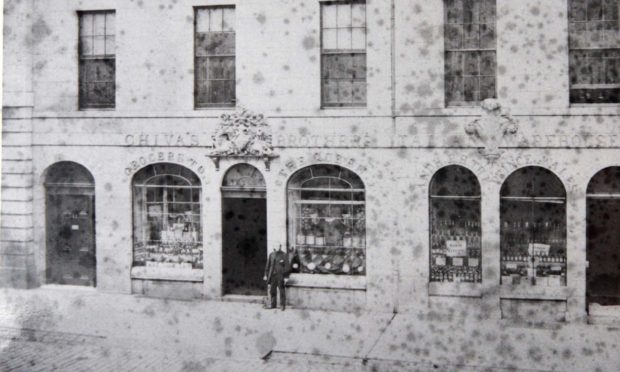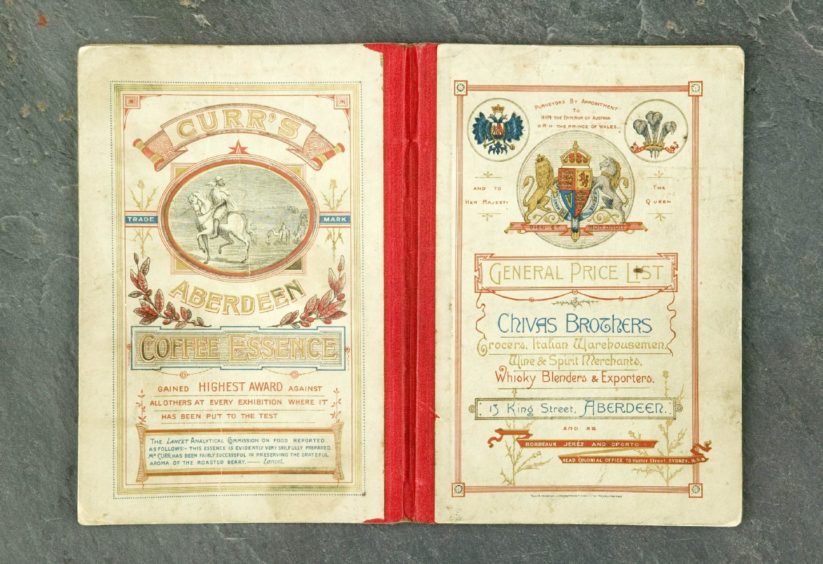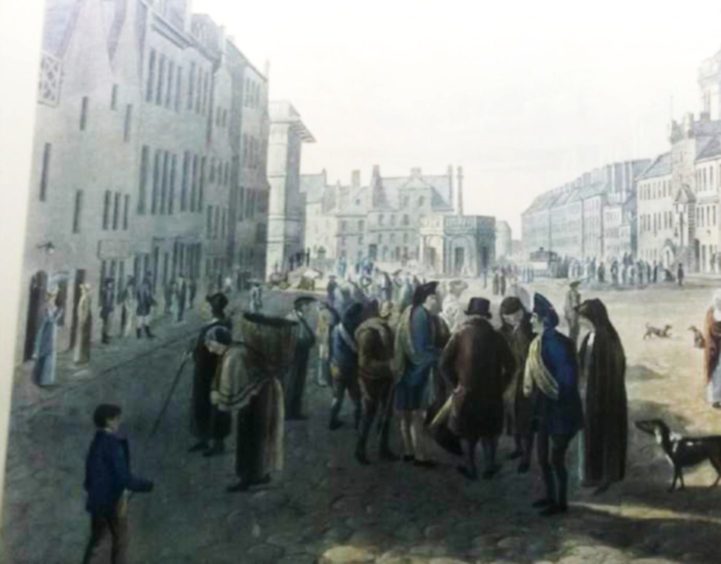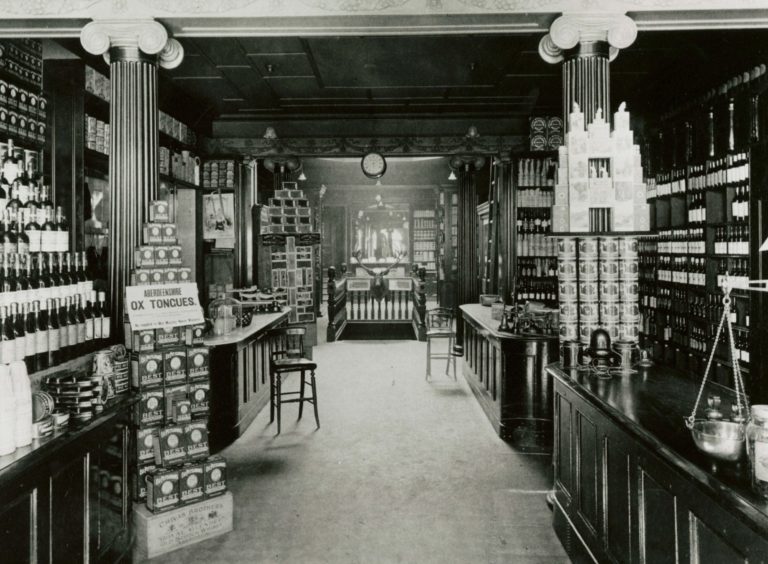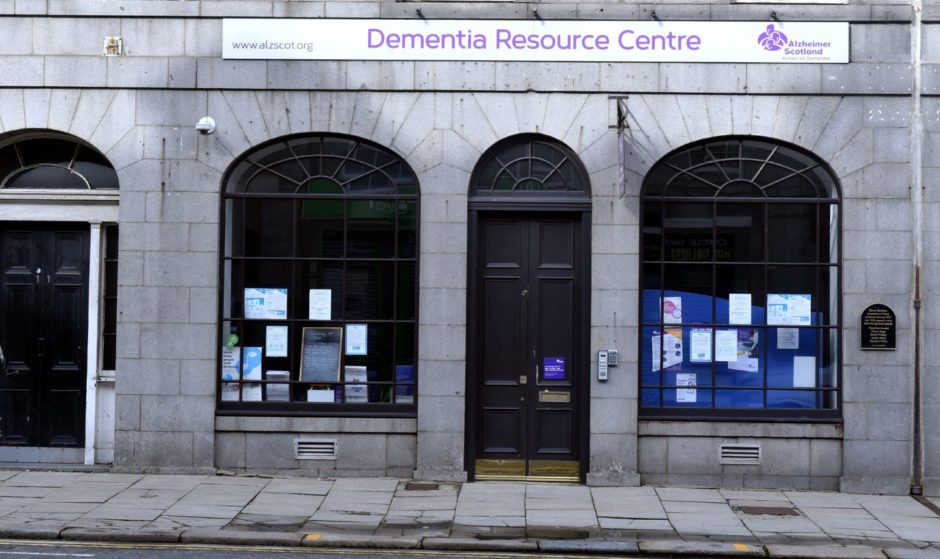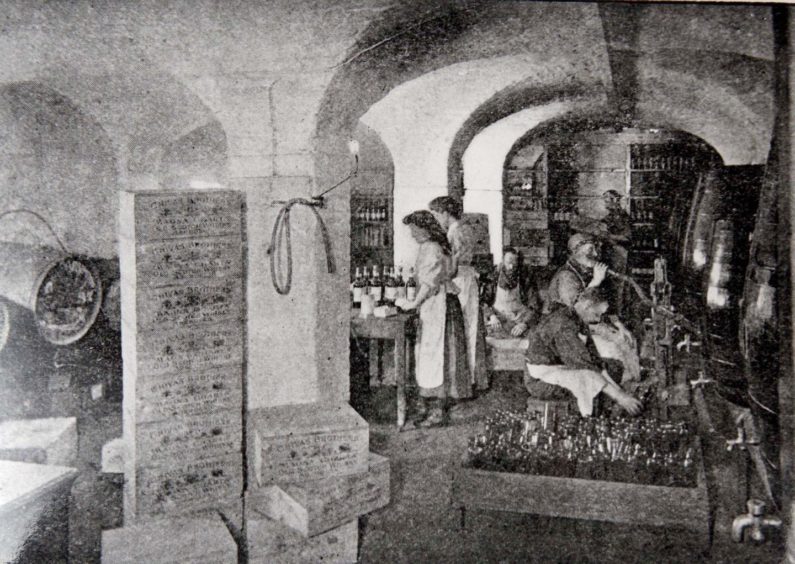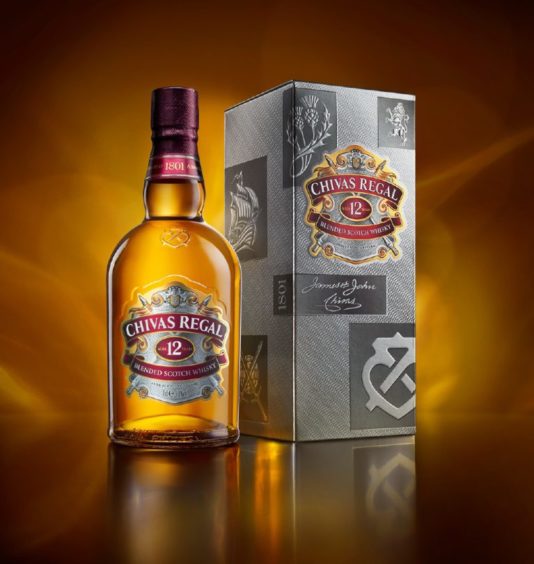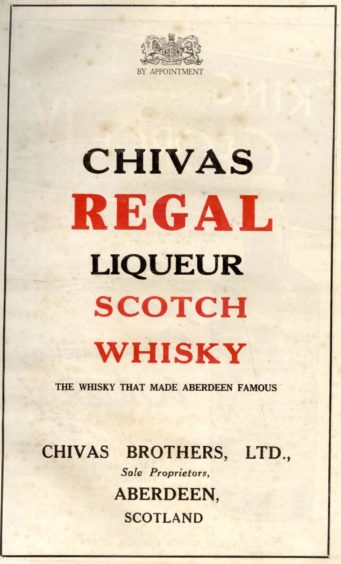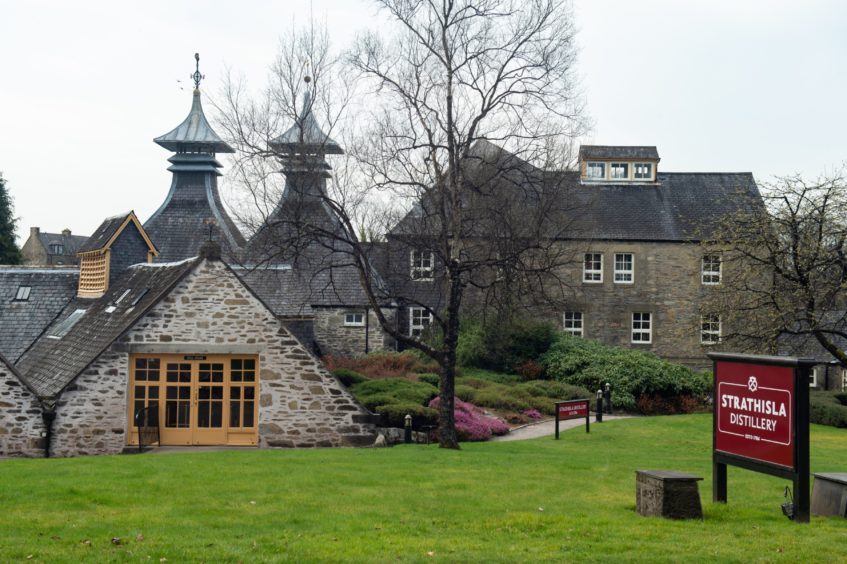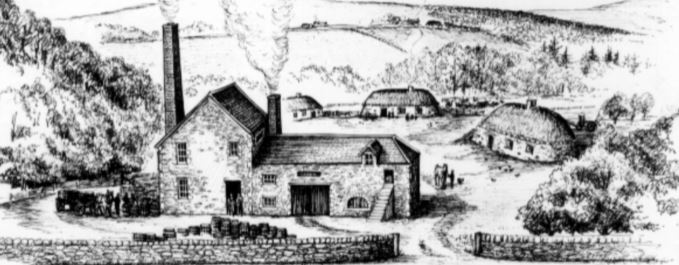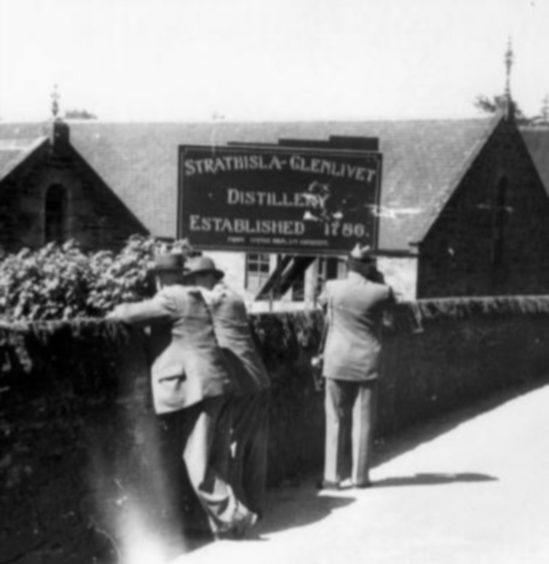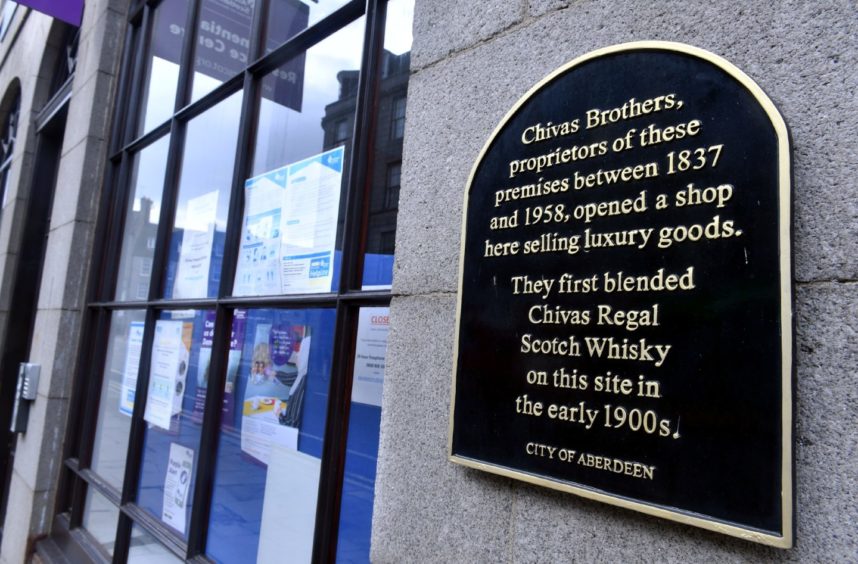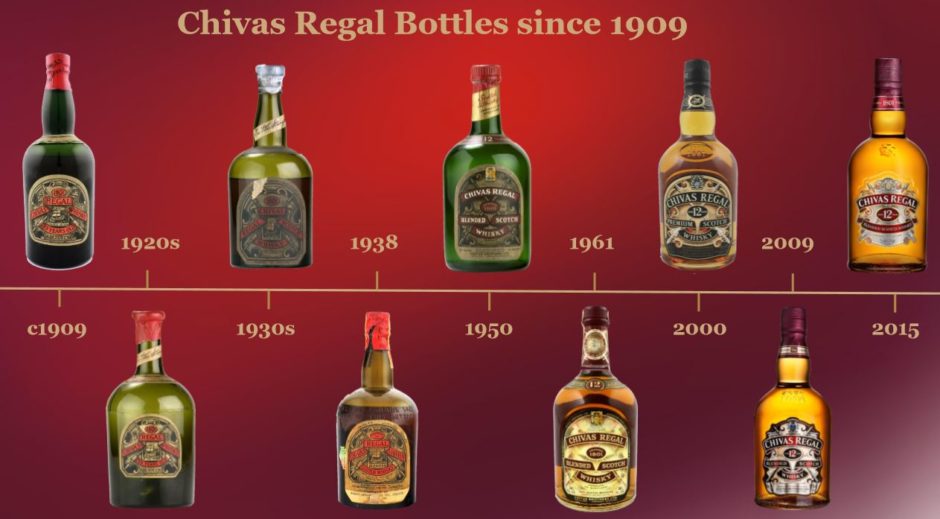When two penniless brothers walked from Ellon to Aberdeen to make their fortune they were taking their first steps towards creating a global luxury whisky, a brand known in every corner of the world.
Today, Chivas Regal, first blended in a basement in King Street, is a proud ambassador for Scotland, so firmly entrenched in popular culture it has been name-checked in everything from Mad Men to The Exorcist.
However, James and John Chivas didn’t set out to create a world-beating blended whisky, synonymous with sophistication and excellence, with the oldest working distillery on Speyside, Strathisla at Keith, as its spiritual home.
Their ambition was to become the Granite City’s leading purveyors of high-quality groceries, luxury goods, wines and liquor at the height of the Victorian era.
The story starts in 1836 when the brothers, aged 26 and 22, decided to leave their family farm at Strathythan near Ellon, where they were two of 14 children, said Chivas Brothers archivist, Chris Brousseau.
“They walked the 16 miles into Aberdeen. They wouldn’t have had a lot of money, but they were going to find jobs. They had a cousin, a banker in Aberdeen, who was able to set them up. They needed to leave home, they needed jobs, so they walked in to the city,” said Mr Brousseau, with some accounts saying the journey took them three days.
John started work in a wholesaler while James joined a grocery firm being run on King Street by William Edwards.
Its origins – and by extension Chivas Brothers’ – went back to 1801 and a business on the Castlegate selling quality provisions, wine and spirits, at where there is now an ATM.
James became a partner in 1838, with Charles Stewart.
“The shop was doing quite well and a Royal Warrant was originally granted by Queen Victoria to James Chivas in 1843 as purveyor of groceries for Her Majesty. When the Queen was at Balmoral, Chivas was quite proud of being able to supply just about anything to the Queen,” said Mr Brousseau.
“We have a letter in the archives in which she ordered a case of whisky and a quiet donkey to take her around the grounds of Balmoral.
They were becoming quite famous
and quite proud of their royal
connections and the Royal Warrant.”
“So they were becoming quite famous and quite proud of their royal connections and the Royal Warrant.”
In 1857, the Stewart and Chivas partnership dissolved and John joined James to create Chivas Brothers. As they garnered other Royal Warrants from other members of the Royal Family, their fame – and business – soared.
The King Street show was a thing of wonder, stocking the finest provisions from London, Paris, Rome and Madrid, an emporium of teas, spices, brandies, cheers and wines from across the globe.
“They prided themselves that they could actually get any supply from anywhere in the world and get it to their customers. It was more than just a whisky shop. It was a food emporium.”
It opened the door for modern blending
and that’s when John and James started
creating their first blended whiskies.”
But Chivas Brothers took a different direction in 1860 when the Spirit Act allowed for the blending of different whiskies. Always with an eye to an edge, the brothers, especially James, saw an opening for a new opportunity.
“It opened the door for modern blending and that’s when John and James started creating their first blended whiskies,” said Mr Brousseau. “They found by mixing different casks of mostly malt whisky, and some grain whiskies, you could get a smoother, more consistent quality of whisky.
“Royal Glen Dee was the very first blend they created. It was quite innovative, they were trying to create a blended whisky with a brand name to it that people would recognise. And they were always going for the best quality whiskies.”
Another of their early blends was Royal Strathythan, a nod to their family farm.
Early pictures of the basement of the King Street shop show stacked barrels of whisky, slowly maturing and ageing. “They had real knowledge of whiskies, even back in the late 1800s,” said Mr Brousseau.
Tragedy struck in 1862, when younger brother John died. James, heartbroken as he was, threw himself back into work. He also brought his son, Alexander into the firm, training him in the arts of the fine whiskies, wines and produce they were selling.
James died in 1886 at the age of 75, prompting a flood of condolences from around the world, including royalty.
Royal Loch Nevis select
liqueur 20 years old,
recommended for invalids.”
His son Alexander died in 1893. Alexander’s right hand man, Alexander Smith, and the company’s master blender Charles Stewart Howard bought the firm in 1895 with the proviso the company name of Chivas Brothers remain forever.
Howard used his considerable knowledge and expertise bringing together the extensive stocks of maturing whisky in the company’s basement storehouse.
A price list from the time shows blends such as “Magna Charta 5 years old” and “Royal Strathythan 10 years old” as well as a “Royal Loch Nevis select liqueur 20 years old, recommended for invalids”.
Mr Brousseau said: “In 1895 you didn’t even have to age whisky to sell it, but Chivas Brothers already had a good reputation for knowing what maturation does to whisky. The longer you leave it in cask, the smoother it gets. It was quite remarkable.”
Charles Stewart Howard then brought his considerable skill to bear on creating a new blend in 1909 – one which included a 25-year-old whisky, working in the basement at King Street.
That’s why we lay the claim to the world’s first
luxury whisky. There was nothing on the
market that came close to this at the time.”
“He created Chivas Regal, right in Aberdeen. We think the Chivas part was as a tribute to the brothers and the family. The Regal part as all the whiskies were named ‘royal’ and they wanted to elevate that.
“It was produced primarily for the North American market,” said Mr Brousseau. “Again, you didn’t have to age whisky until 1915. So for Chivas to create a 25-year-old whisky in 1909 is remarkable. That’s why we lay the claim to the world’s first luxury whisky. There was nothing on the market that came close to this at the time.”
From that high point, however, the road for Chivas Brothers became rockier, with world-shaking events from the Great Depression to Prohibition in the States and two world wars setting Scotland’s whisky trade back on its heels.
Post Second World War, though, a US entrepreneur entered the scene, Canadian Sam Bronfam, head of Seagram.
He knew there would always be a North American market for good whisky and decided to go shopping in Scotland.
In 1949 that involved buying the Chivas Brothers grocery shops and its inventory of aged whisky and the Chivas Regal brand.
A year later he added Strathisla Distillery – then called Milton – whose single malt had long been at the heart of Chivas Regal. The oldest working distillery on Speyside, founded in 1786.
Mr Brousseau said: “We have the actual land agreement in the archive and it talks about the Earl of Findlater and the people who bought the land for building the distillery. We have an accounts book… which shows the first thing they bought on June 22nd 1786 is two shovels, some advice and a sand harp or sieve, two wheelbarrows and some stones. It’s a lovely little piece of provenance for Strathisla we found in the archives in Aberdeen.”
In the 1950s Chivas Regal, in its 12-year-old form, went on to become a world-beating brand and one of the most famous whiskies in America.
It was so entrenched in the national psyche it has been name-checked in popular culture from films like The Exorcist and Working Girl, to TV shows like Mad Men, American Dad – and even Only Fools And Horses.
“In the 50s, 60s and 70s in the US, it was made out to be an elite type of Scotch, something above the rest, a cult whisky. If you go into a bar and order Chivas Regal, it means you’re somebody. You know what you’re talking about,” said Mr Brousseau.
Today, Chivas Regal is known in every corner of the globe. From its Speyside home it is exported to more than 100 countries across the globe selling more than 4.3 million nine-litre cases every year.
“It’s gone basically from a brand made in a basement in Aberdeen to be a whisky that is known around the world,” said Mr Brousseau.
While Aberdeen is still the birthplace of Chivas, there are few tangible links left. A plaque stands outside the former shop on King Street, proclaiming it as the birthplace of Chivas Regal.
A memorial window to James Chivas can be found in St Andrew’s Cathedral, not far from the shop on King Street where he started his business empire.
Chivas Brothers, though, refer to Strathisla as its spiritual home – and is the repository for the brand’s whisky archives. The distillery recently re-opened its visitor centre following the coronavirus lockdown, allowing them the chance to sample the malt, the Chivas blends and even have a go at creating their own blends.
“You go to the blending room, get six different whiskies and the opportunity to see how difficult it is to make a blend,” said Mr Brousseau. “We’ve taken a decision the distillery is all about Chivas Regal and all about blending. The world knows about Chivas Regal and we are trying to attract that audience to come to a malt distillery to learn about blending.”
“I think it would be a dream
come true for them. They were
extremely proud of what they did.”
With its worldwide reach and its roots still firmly in the north-east, you have to wonder what the once poor brothers James and John would make of the global luxury brand and one of the best-known whiskies on the planet.
“I think it would be a dream come true for them. They were extremely proud of what they did, proud of using the best quality whiskies, proud of using the best quality ingredients, proud of their shops,” said Mr Brousseau.
